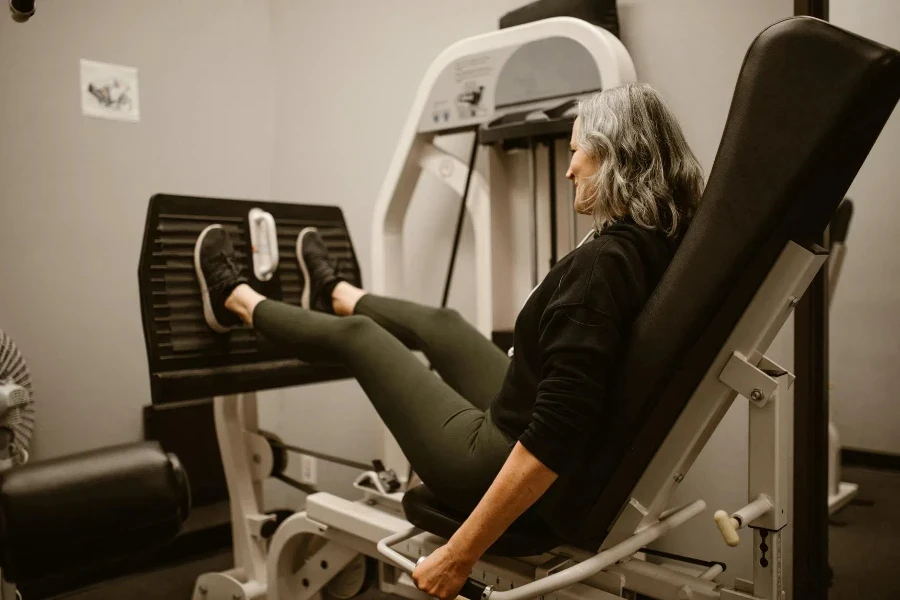The journey towards achieving robust lower body strength and muscular definition often leads fitness enthusiasts to a pivotal crossroads: choosing between the hack squat and the leg press. Both exercises are stalwarts in leg day routines, celebrated for their effectiveness in targeting the quadriceps, hamstrings, and glutes. However, nuances in their execution, benefits, and potential strain on the body make each distinct. This article aims to dissect these differences, offering insights into how each exercise can be integrated into your workout regimen for optimal results.
Table of Contents:
– Understanding the hack squat and leg press
– Muscle engagement and benefits
– Injury risk and considerations
– Equipment and space requirements
– Tailoring to fitness goals
Understanding the hack squat and leg press

The hack squat is performed on a machine where you squat down, with your back against a pad and shoulders under supports, pushing up through your heels to return to the starting position. It’s designed to mimic the traditional squat movement while providing additional support for your back. The leg press, on the other hand, involves sitting in a chair and pressing your legs against a weighted platform that’s set at an angle. You extend your legs to push the weight away from you before returning to the starting position. Both exercises are leveraged in strength training routines but serve different purposes based on the individual’s fitness level and goals.
Muscle engagement and benefits

When it comes to muscle engagement, the hack squat has a slight edge in mimicking the natural squat movement, which requires significant work from the core muscles to stabilize the body throughout the exercise. This results in not only stronger legs but also a more robust core. The leg press, with its seated position, places less strain on the back, making it a safer option for those with lower back concerns. It allows for heavier weights to be used, focusing more on isolating the quadriceps, hamstrings, and glutes without as much core engagement.
The benefits of each exercise extend beyond muscle building. The hack squat, with its emphasis on a more natural squatting position, can improve functional strength and mobility, which translates well into improved performance in sports and daily activities. The leg press, by allowing for heavier weights, can lead to significant gains in muscle mass and leg strength.
Injury risk and considerations

Injury risk is an important factor to consider when comparing the hack squat vs leg press. The hack squat, due to its more complex movement pattern, requires proper form to avoid strain on the knees and lower back. It’s crucial for individuals to adjust the machine to fit their height and to not descend lower than their flexibility allows to minimize risk. The leg press, while generally safer for the back due to its seated position, can still pose risks to the knees if the weight is too heavy or if the legs are pressed too far towards the chest.
It’s advisable for individuals to consult with a fitness professional to ensure they’re performing these exercises correctly and to integrate them into their workout routines in a way that aligns with their fitness levels and goals.
Equipment and space requirements

The hack squat and leg press both require specific machines, which can be a consideration depending on the space and equipment available. The hack squat machine has a smaller footprint compared to the leg press, making it a more feasible option for home gyms with limited space. However, commercial gyms typically offer both machines, providing an opportunity to incorporate both exercises into your routine.
Choosing between the two exercises may come down to personal preference, availability of equipment, and specific fitness goals. It’s worth exploring both options to determine which exercise feels more comfortable and effective for you.
Tailoring to fitness goals

Ultimately, the choice between hack squat vs leg press should align with your fitness goals. If improving functional strength and core stability is your aim, the hack squat might be the more beneficial choice. For those focused on building leg mass and strength without putting strain on the back, the leg press could be the preferred option.
Combining both exercises, when possible, can provide a comprehensive approach to leg strength and development, allowing for the benefits of each to complement one another. Listening to your body and adjusting your workout routine as needed will ensure you achieve the best results while minimizing the risk of injury.
Conclusion: In the debate of hack squat vs leg press, both exercises offer unique benefits and can be valuable additions to your fitness regimen. The choice between them should be informed by your personal fitness goals, physical condition, and preferences. By understanding the nuances of each exercise, you can make an informed decision that aligns with your journey towards stronger, more defined legs. Remember, consistency, proper form, and listening to your body are key to reaping the benefits of any exercise program.




